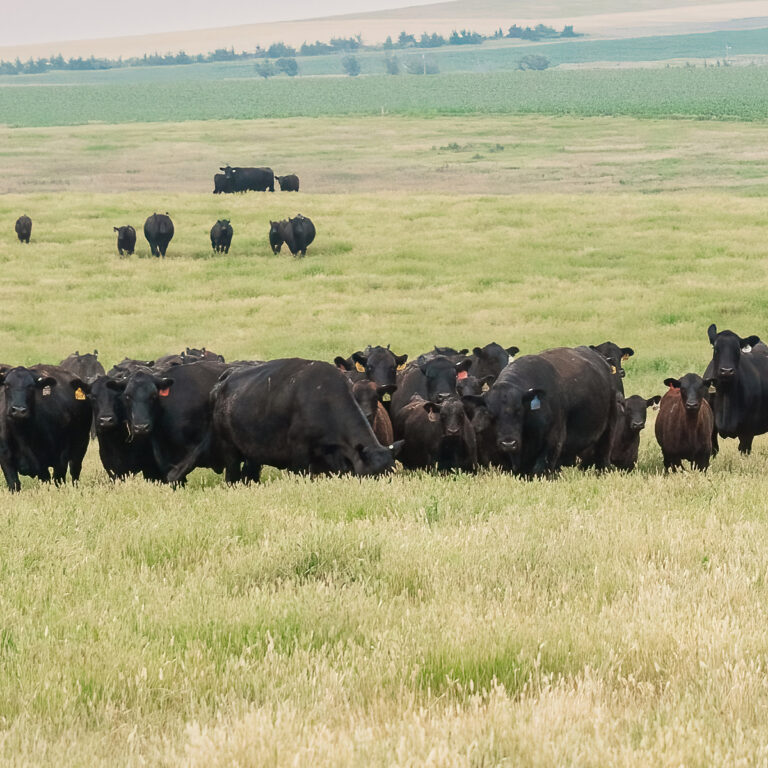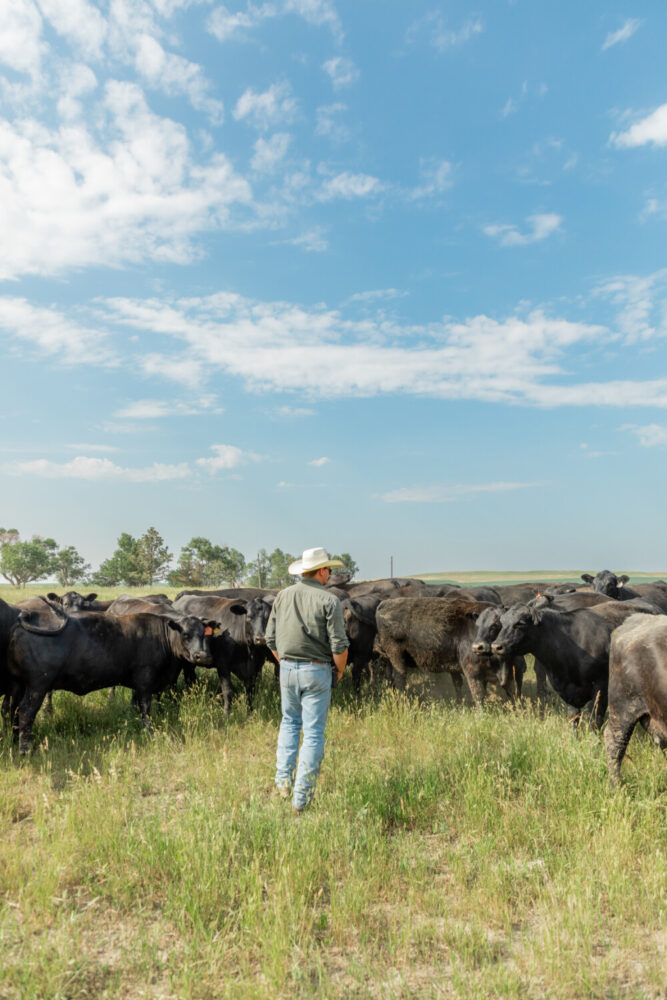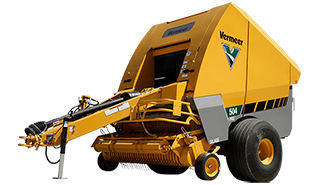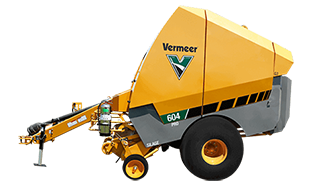
Optimize Your Herd with Forage Management
April 2024
When it comes to best practices for herd management, this common adage rings true: You can’t manage what you don’t measure.
While high yields seem appealing, quantity doesn’t always mean quality with forage production. In fact, less yield can mean more nutrition. Finding the perfect balance varies depending on your region, rainfall, beef herd and haying goals.
Dr. Jennifer Tucker, associate professor in beef nutrition and forage management at the University of Georgia, has spent her career conducting research and helping producers find their balance for optimum success.
“Forages are the foundation for the nutrition of that beef herd,” she said. “Regardless of where you’re at, your animals are going to need forages first, so this is what you need to focus on to make sure you have a good foundation for the nutrition.”
Measurement is key to a successful herd management plan
For cattle grazing and forage production, a proper analysis of the environment will provide the building blocks for a sound management strategy. Collecting forage samples regularly, performing soil tests and learning rainfall history are all keys to analyzing forage quality.
“We can’t manage our operations from a windshield,” she said. “We need to get out regularly, walk our pastures, observe our animals on a regular basis, see what our environment is telling us.”
These observations can bring challenges to the forefront, like growth of invasive plants brought on by overgrazing. It can be overwhelming to nurture the ground back to health, but Tucker advised producers to take it one step at a time.

“Make one improvement today, and you are one step ahead a year from now than you were yesterday,” she said. “Start with what you’ve got, utilize the resources that you have, and then let’s move forward.”
Next, Tucker said it is time to dig deeper to become a better manager of the overall system. Extension offices around the country can help producers take soil samples and evaluate them.
These initial assessments are a good place to start when developing a grazing management strategy for your herd and land.
Extend the grazing season with proper management
To extend the season of available forages, Tucker recommended rotational grazing as a management tool. This approach allows producers to remain more productive with less input cost on supplemental feed.
Producers can start by finding the appropriate stocking rate for their area, which can vary greatly across the country. Local extension offices can help and will consider forage type and rainfall.
From there, Tucker advised producers to test rotational grazing by setting up a temporary cross fence to rotate the herd weekly. Her experience has shown that using this method, producers are likely to gain more grazeable days.
“Just start with one fence,” she said. “Don’t try to go do a whole fencing plan around the whole farm. Start with this one, learn the technology and then you can start to grow it and build on that.”
Tucker said producers will learn more about their forages over time. They’ll be able to see how integrating different types of plants in a sound crop rotation program can maximize quality forage per grazeable acre. Tucker’s research over the last decade has centered around reintegration of alfalfa into the deep south to illustrate the concept.
While it is not customary to graze alfalfa alone, Tucker and her team have found success in using it in a mixture that includes legumes that also promote diversity and soil health. They have seen this addition extend the grazing season of the forage compared to Bermuda grass alone.
“We know we’re not hitting that maximum yield, but we see a really good benefit to the overall system,” she said. “We get that increase [in] nutritional value; we’re increasing the use of our land. We’re seeing improved animal performance.”
Tucker said these initial investments can grow into a more intensive management plan as you learn what works for you. There is no one size fits all, but taking the time to find your rhythm can be rewarding.
“You’re going to see improvements in the animal performance,” she said. “They sell better at market. There are more dollars in your pocket, which is your overall goal, and then improvements in that sustainability of the system,” she said.
Maximize forage production
Tucker said putting some acreage into hay can be productive for beef cattle herds. The initial steps of assessing forages and soil are similar to grazing considerations, but the steps after may differ.
In a hay-focused operation, Tucker said a monoculture tends to be the best choice for a quality product. That said, it is still common in her area to overseed winter annuals for more grazing opportunity. Producers must ensure those forages are removed prior to Bermuda grass coming out to maintain purity in the hay.

When the weather is unpredictable, Tucker said harvesting silage can be beneficial.
“That way we can get in and get out quickly,” she explained. “We can retain more of that leaf that we’re looking at. We have less concerns when it comes to weather impacts, and then we can effectively use the mixture that is hard to dry down for dry hay without losing most of the leaf.”
As the quality of the forage begins to diminish later in the year, Tucker advised producers with a hay focus to consider grazing after the first frost. This allows some forage for the cow herd while cleaning off and preparing the field for the next season.
Different harvesting strategies have different equipment needs as well. To optimize your operation, it is key to identify the best tools for the job. Local Vermeer dealers are ready to help you find the best baler and forage equipment for your environment and goals.
Take advantage of regional resources
From east to west and north to south, rainfall amounts and the types of forage available vary greatly. These variations are a huge indicator of what the year-round grazing and hay harvest schedule will look like.
Fortunately, you have access to resources through your local Vermeer dealer, local extension office and the Natural Resources Conservation Service to help you work through environmental differences while still applying the best management principles across the board.
“Regionality impacts some of the changes that you’re going to make, but the principles are still the same,” Tucker said.
This article contains third-party observations, advice or experiences that do not necessarily reflect the opinions of Vermeer Corporation, its affiliates or its dealers. Individual results may vary based on care and operation of machine and crop and field conditions, which may adversely affect performance.
Vermeer Corporation reserves the right to make changes in engineering, design and specifications; add improvements; or discontinue manufacturing at any time without notice or obligation.
Equipment shown is for illustrative purposes only and may display optional accessories or components specific to their global region. Please contact your local Vermeer dealer for more information on machine specifications. Vermeer, the Vermeer logo and Equipped to Do More are trademarks of Vermeer Manufacturing Company in the U.S. and/or other countries.
© 2024 Vermeer Corporation. All Rights Reserved.



